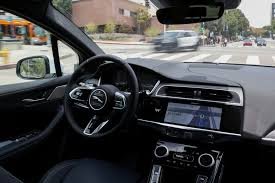A major shift in the regulatory landscape for autonomous vehicles has been introduced by the National Highway Traffic Safety Administration (NHTSA). On Friday, it was announced that the agency would begin streamlining its Self-Driving Car Exemption Review process. These reviews apply specifically to exemption requests for vehicles that lack traditional human controls such as steering wheels, brake pedals, or mirrors—features that have long been mandated under U.S. federal safety standards.
Expanded NHTSA Role in Self-Driving Car Exemption Review Oversight
For years, NHTSA has been tasked with overseeing vehicle safety on American roads. A unique authority has been granted to the agency: it may approve exemption petitions from federal motor vehicle safety standards (FMVSS) for up to 2,500 vehicles per manufacturer per year. This provision was established to support the advancement of vehicle innovation, particularly in the autonomous vehicle (AV) sector.
Despite having this authority, multiple exemption petitions from major automakers and tech companies have been left pending for extended periods—sometimes for years—without a final decision. This prolonged process has stifled innovation and created regulatory uncertainty in the fast-evolving self-driving technology market.
What Is Being Streamlined?
Under the revised procedures, the exemption petition review process will be optimized to improve transparency, timeliness, and consistency. It has been clarified by NHTSA that the intent is to ensure that petitions are addressed in a “timely and efficient manner” while maintaining the agency’s commitment to public safety.
By implementing a more structured framework, the agency aims to reduce bottlenecks in reviewing autonomous vehicle exemption petitions. These petitions, typically filed by companies aiming to test or deploy driverless vehicles without standard human driving features, require detailed safety analysis and often involve novel engineering approaches.
Focus on Safety Without Human Controls
The petitioners are not asking to skirt safety regulations but are instead seeking the flexibility to demonstrate equivalent or improved safety using autonomous systems. The vehicles in question are often designed from the ground up without the need for a steering wheel, brake pedal, or even a traditional driver’s seat.
Under the updated approach, exemption applications will be more clearly guided by NHTSA’s internal criteria, and public comment periods may be managed more efficiently. The agency has emphasized that its priority will remain public road safety, even as automation technologies continue to evolve.
Historical Delays in Exemption Review
Several high-profile companies, including GM’s Cruise, Waymo, and Zoox, have submitted exemption requests over the last few years. However, action on many of these petitions has been slow. Stakeholders across the autonomous vehicle industry have frequently criticized the agency for a lack of clarity and speed, citing the need for a more responsive federal regulatory environment.
In some cases, these delays have forced companies to modify their business plans or seek alternative jurisdictions—both in the U.S. and abroad—where pilot programs and commercial deployments face fewer regulatory hurdles.
Broader Impact on the Autonomous Vehicle Industry
The announcement of a more streamlined review process is expected to encourage further investment and development in the AV industry. Companies striving to build truly driverless vehicles have long sought regulatory clarity and a predictable timeline for approval. With the new structure in place, a renewed sense of momentum is likely to be instilled across the sector.
Moreover, international observers will be watching closely, as regulatory decisions by NHTSA often influence global standards and best practices. The United States has long served as a key market and regulatory benchmark for advanced vehicle technologies.
Stakeholder Reactions
Industry leaders and safety advocates have responded positively to the agency’s efforts to modernize its review procedures. Several organizations representing autonomous vehicle manufacturers have issued statements praising the initiative as a step toward balancing safety and innovation.
At the same time, safety groups have urged NHTSA to ensure that the revised process does not lead to the dilution of safety standards. It has been stressed that while innovation must be supported, public safety should not be compromised.
Looking Ahead
As the future of mobility continues to be shaped by automation and artificial intelligence, the role of federal regulators like NHTSA will remain pivotal. The introduction of a more streamlined exemption process marks a proactive move by the agency to align itself with evolving transportation technologies.
Though it remains to be seen how efficiently the new process will function in practice, it is clear that a framework better suited to accommodate rapid technological change is now being adopted.
Industry stakeholders, public policy experts, and safety regulators will continue to monitor how the new rules are implemented and whether the expected benefits—faster decision-making, enhanced clarity, and greater innovation—are fully realized.
Conclusion
Through its decision to streamline self-driving car exemption reviews, NHTSA has signaled a commitment to modernizing regulatory practices while maintaining high safety standards. As the transportation ecosystem continues to evolve, policies that reflect technological advancement without compromising public safety will be essential.
With autonomous vehicle regulation entering a new phase, a more agile and responsive framework is being welcomed by developers, manufacturers, and the broader mobility ecosystem.


